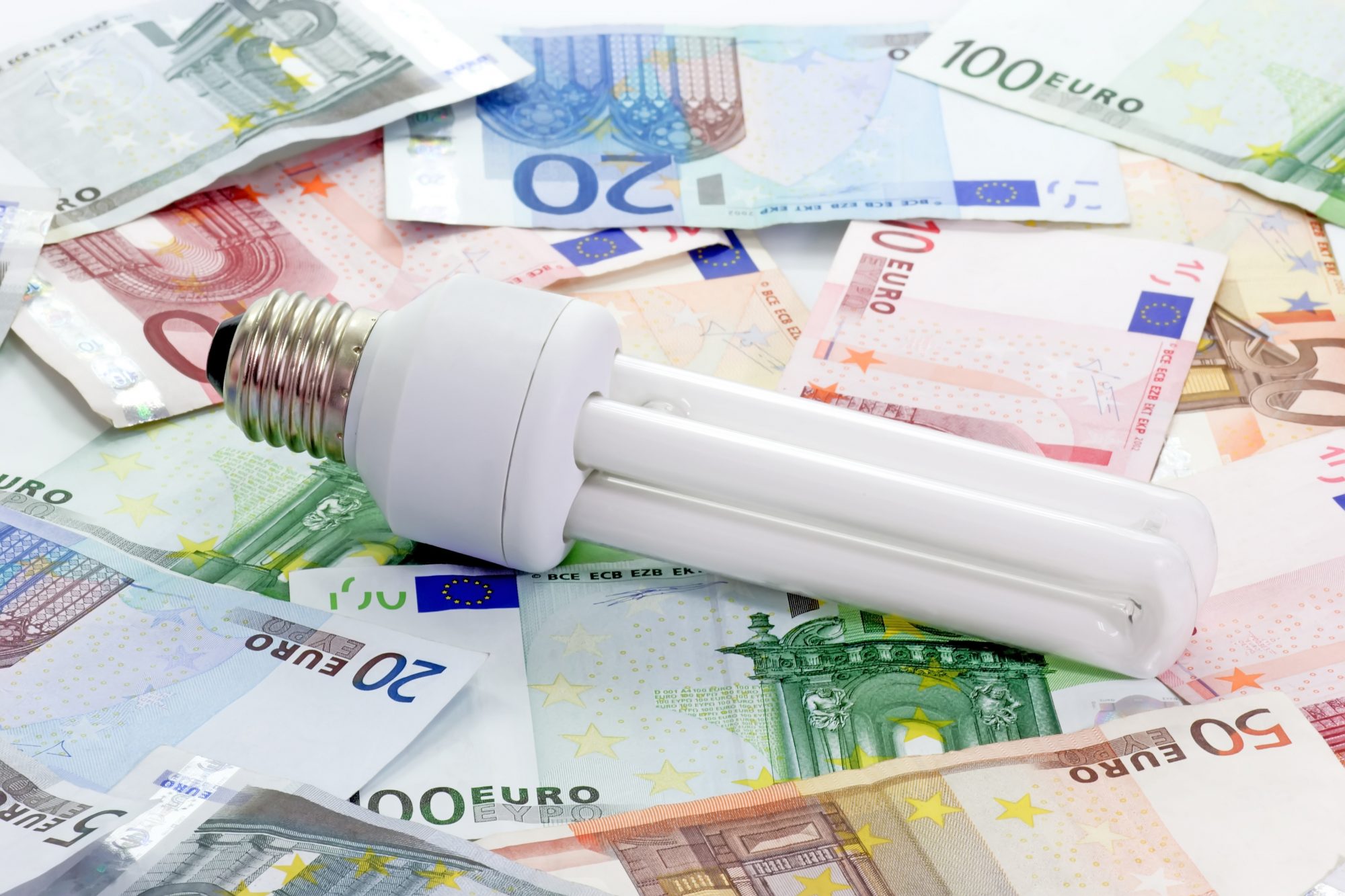
Carsten Østergård Pedersen, Rune Kaagaard Sørensen and Asbjørn Bjerregaard Ebbesen from Grundfos Holding A/S argue that energy efficiency should be prioritised first in heating
Dependence on foreign energy supply to the European Union (EU) is not sustainable, nor for social Europe or the climate. The heating sector is one of the most important sectors, as it is heavily dependent on natural gas and has a big impact on the normal citizens’ economy. The Energy Efficiency First principle, therefore, is very important for the future of Europe.
The best weapon against a growing problem
Consolidation of the Energy Efficiency First principle in EU’s Fit-For-55 negotiations is becoming significantly more important as the climate, social Europe and our energy security call for a change in how we get our energy and use it. IEA argues that 40% of our carbon reductions towards 2050 should come from energy-efficient solutions (1), however, we need to double the pace of energy-efficient solutions to stay within the Paris Agreement goals. (2)
Energy efficiency also plays a crucial role in our energy security. Before the Ukraine conflict, we saw unprecedented prices for natural gas, which is the most used energy source in the European Union after oil. (3) However, experts only expect higher prices due to the current geopolitical conflict. (4) The situation is expected to have made more than 80 million Europeans live under energy poverty (5), which will only get worse. However, a 1% in energy savings is expected to reduce gas imports by 2.6% (6), and energy efficiency has proven to be the most impactful measure on lowering natural gas imports. (7)
The heating sector is the most important sector to focus on, as it represents 50% of Europe’s total end-use consumption, and fossil fuels are still delivering 75% of all heating within the EU. (8) Moreover is 79% of all energy in European households is used for heating water and spaces. (9) Putting energy efficiency first in the heating sector can, therefore, lower carbon emissions, import of natural gas and citizens’ energy bills.

How to create energy-efficient heating
To create a more energy-efficient heating sector, the EU should be focused on the deployment of fourth-generation district heating, individual heat pumps and lowering the total heat demand. Luckily, all the technologies are ready for deployment today.
First, local authorities should focus on making strategic heat plans, which can secure a fast and cost-effective transition of local heating towards energy-efficient solutions that run on renewable energy and surplus heat. There is a massive untapped energy potential in local communities, such as geothermal energy and surplus heat from industries, data centres, and soon power2x. Surplus heat alone is expected to deliver 25% of future energy for district heating. (10) Strategic heat planning should integrate that future of heating needs to run at lower temperatures for lower heat losses and more efficient integration of heat pumps plus renewable energy. The deployment of fourth-generation district heating, therefore, plays a significant role in reducing our dependency on natural gas import and getting cost-effective to climate neutrality. (11)
Second, the EU should promote energy efficiency measures in buildings and industry for lowering the demand for heating. Nine out of ten buildings in 2050 have already been built in Europe. (12) Retrofitting buildings with more efficient systems, therefore, plays a significant role in reaching the Fit-For-55 target as we should save up to 32-40% of our current heating demand towards 2050 for reaching the most cost-effective transition of heating. (13) Therefore, the EU should heavily promote retrofitting of buildings in the Union. This should especially be through a focus on active renovations, which is changing or updating the equipment that controls buildings’ energy use, such as heating equipment and technologies that can regulate and control energy use actively. These renovations often represent quick, impactful, and very cost-effective energy savings. (14) Hydronic balancing of a building’s heating systems is such an example, where a cheap and quick method can save between 5%-20% of a building’s heating demand by securing a more efficient distribution of heating in a building. (15)
The above will both secure a faster and cheaper transition away from fossil fuels. The importance of current Fit-For-55 negotiations, therefore, represents an important time for Europe’s future energy situation.
Energy Efficiency First in Fit-For-55
To see the necessary change, we at Grundfos Holding A/S propose how the EU should move forward with the Energy Efficiency First principle in the Fit-For-55 negotiations by:
- Securing mandatory heating plans in cities with over 20,000 inhabitants, which must include the assessments of low-temperature zones, geothermal energy and surplus heat recovery.
- By 2025, the National building renovation plans should address heating solutions in a zonal approach, including low-temperature district heating zones in dense areas and individual heat pumps zones in remote areas.
- Implement binding targets for the Member States for the usage of waste heat (50% of the waste heat should be utilised in 2025 and 75% in 2030).
- Implement requirements for data centres to be connected to the heating grid: Data centres of sufficient size (with a total rated energy input exceeding 1MW) should consider being connected to the heating grid to maximise the use of waste heat.
- A bigger focus on digital building management, such as balancing, in the Energy Performance of Buildings Directive. 14% of the EU’s energy efficiency targets can be reached with digital building management, (16) and this should, therefore, have a greater focus.
References
- https://www.iea.org/reports/energy-efficiency-2020
- https://www.iea.org/topics/energy-efficiency
- https://ec.europa.eu/eurostat/statisticsexplained/index.php?title=Energy_statistics_-_an_overview
- https://www.naturalgasintel.com/oil-natural-gas-prices-soar-as-russia-launches-war-in-ukraine/
- https://www.euractiv.com/section/energy-environment/news/energy-crisis-could-worsen-poverty-for-millions-of-europeans/
- Directive (EU) 2018/of the European Parliament and of the Council of 30 May 2018 amending Directive 2010/31/EU on the energy performance of buildings and Directive 2012/27/EU on energy efficiency (europa.eu) (https://eur-lex.europa.eu/legalcontent/EN/TXT/PDF/?uri=CELEX:32018L0844&from=EN)
- https://www.iea.org/reports/multiple-benefits-of-energy-efficiency/energy-security
- https://energy-cities.eu/why-and-how-fossil-fuels-in-buildings-will-be-history-by-2050/
- https://energy.ec.europa.eu/topics/energy-efficiency/heating-and-cooling_en
- https://vbn.aau.dk/ws/portalfiles/portal/288075509/HRE_Quantifying_the_low_impact_of_the_low_carbon_heating_and_cooling_roadmaps_Executive_Summary.pdf
- Ibidem
- https://www.renovate-europe.eu/2018/10/30/renovate-europe-infographic-2015/
- https://vbn.aau.dk/ws/portalfiles/portal/288075509/HRE_Quantifying_the_low_impact_of_the_low_carbon_heating_and_cooling_roadmaps_Executive_Summary.pdf
- https://www.ea-energianalyse.dk/wp-content/uploads/2021/12/Main-report_Active-Energy-Efficiency.pdf
- Altendorfer, F, ”Statement regarding hydronic balancing”, FH Münster – University of Applied Sciences.
- https://eubac.org/wpcontent/uploads/2021/03/EPBD_impacts_from_building_automation_controls.pdf
Energy efficiency is one of the EU’s pillars in reaching climate neutrality in Europe. The Energy Efficiency First Principle is the anchoring of the pillar into legislation. The objective is to secure energy efficiency measures that are always considered to be based on cost-benefit analyses.
Please note: This is a commercial profile
© 2019. This work is licensed under CC-BY-NC-ND.










